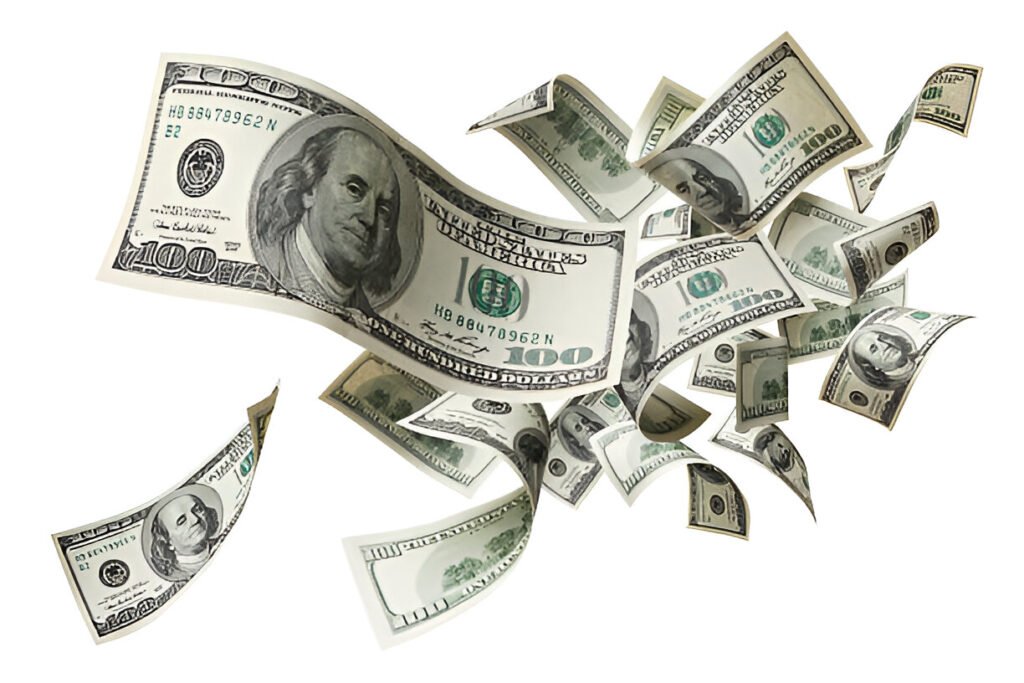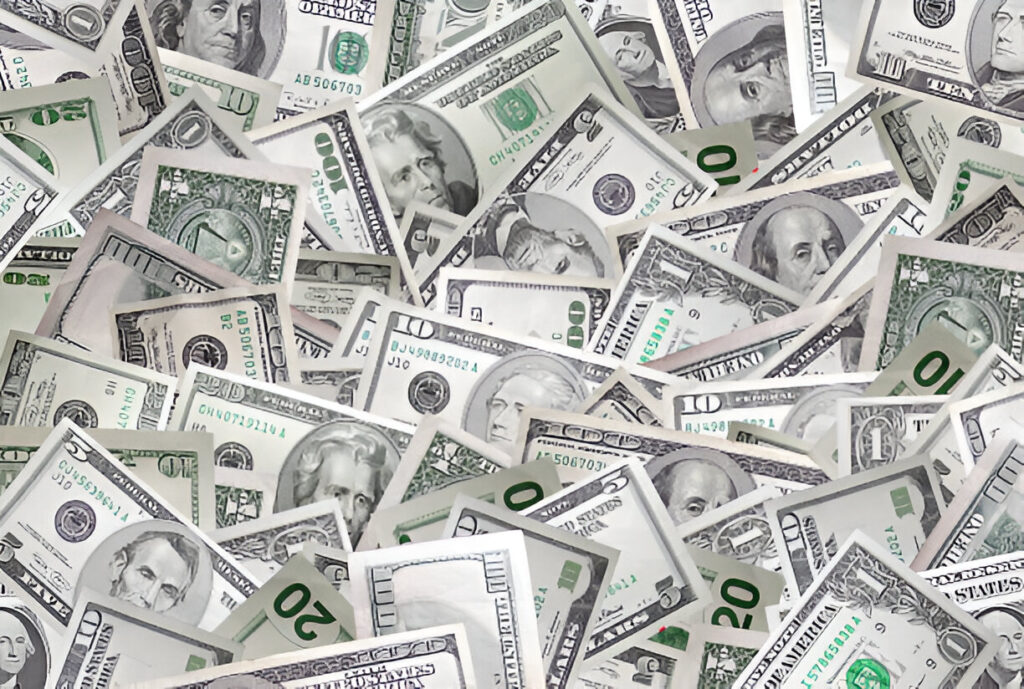Introduction: The Story of the World’s Most Powerful Currency
The American dollar is more than just a currency. It is a symbol of global finance, economic power, and trust. From its humble beginnings in the 18th century to becoming the world’s leading reserve currency, the U.S. dollar has shaped international trade, politics, and society in ways few other currencies ever have. To understand its influence today, one must trace its long journey through history, crises, wars, reforms, and global dominance.
This 4000-word exploration takes us through the origins of money in colonial America, the birth of the U.S. dollar in 1792, its evolution through wars, gold standards, Bretton Woods, and its rise as the backbone of modern finance.

Early Colonial America and the Birth of Money
Before the U.S. dollar existed, the American colonies relied on a mix of foreign coins and barter trade. British pounds, Spanish silver dollars (known as “pieces of eight”), Dutch guilders, and even wampum (shell beads used by Native Americans) circulated across the colonies.
The most trusted coin during the 1600s and 1700s was the Spanish silver dollar, minted in Mexico and other Spanish colonies. Its wide circulation in North America laid the foundation for the dollar becoming America’s currency of choice later on.
Colonial governments often struggled with currency shortages. To solve this, they issued paper notes called “colonial scrip”, but these were often devalued due to overprinting. The British crown eventually banned colonies from printing their own money, creating economic tension that fed into revolutionary sentiments.
Revolutionary War and the First “Continental Dollars”
When the American Revolution began in 1775, the Continental Congress needed money to fund the war against Britain. They issued paper currency known as Continental Dollars. Unfortunately, without gold or silver backing, these notes quickly lost value. The phrase “not worth a Continental” became common, reflecting the hyperinflation of the time.
Despite its failure, the Continental Dollar was crucial because it marked America’s first attempt at creating a unified currency.
The Coinage Act of 1792 and the Birth of the U.S. Dollar
After independence, the young United States needed a stable monetary system. The Coinage Act of 1792 officially established the U.S. dollar as the national currency. Inspired by the Spanish silver dollar, the U.S. dollar was defined by weight in gold and silver.
The Act created the U.S. Mint in Philadelphia, which began producing coins like:
- The silver dollar
- Half dollars and quarters
- Copper cents and half-cents
- The gold eagle ($10)
This was the birth of the bimetallic standard, meaning the U.S. dollar was backed by both gold and silver. The system gave credibility to the new currency and established trust.

The 19th Century: Growth, Gold Rush, and Greenbacks
As America expanded westward, the dollar grew in importance. The California Gold Rush of 1848 increased gold supplies, allowing more coins to be minted.
During the Civil War (1861–1865), the Union needed massive funds. To finance the war, the U.S. government issued paper money known as “Greenbacks”. Unlike earlier notes, these were declared legal tender by law, forcing acceptance.
Greenbacks were controversial but transformative—they set the stage for paper money as the foundation of U.S. currency.
The Gold Standard Era
By the late 19th century, America moved towards a gold standard. In 1900, the Gold Standard Act formally tied the value of the U.S. dollar to gold, making it redeemable for a fixed amount of gold.
This brought stability but also rigidity. While gold-backed currency inspired confidence, it limited flexibility in times of crisis.
The Federal Reserve and Modern Banking
In 1913, the U.S. established the Federal Reserve System to stabilize the banking sector and issue currency. The Fed introduced Federal Reserve Notes, which became today’s modern U.S. dollars.
This central banking system gave America a more flexible financial framework, allowing it to manage money supply, credit, and inflation.
The Great Depression and Abandoning Gold
The Great Depression (1929–1939) forced drastic changes. In 1933, President Franklin D. Roosevelt ordered Americans to turn in their gold coins and certificates. The U.S. dollar was no longer directly redeemable in gold for citizens, though international governments could still exchange dollars for gold.
This marked the end of the domestic gold standard but preserved the dollar’s global role.
World War II and the Bretton Woods System
The end of World War II reshaped the global economy. In 1944, leaders met in Bretton Woods, New Hampshire, to design a new international financial system. They agreed that:
- The U.S. dollar would be tied to gold at $35 per ounce.
- Other world currencies would be pegged to the dollar.
This system effectively made the U.S. dollar the world’s reserve currency, cementing America’s financial leadership.
Nixon, Oil, and the Petro-Dollar
By the late 1960s, U.S. spending on the Vietnam War and social programs caused inflation and gold outflows. In 1971, President Richard Nixon ended the gold standard completely, making the U.S. dollar a fiat currency—backed only by trust in the U.S. government.
To maintain the dollar’s global dominance, the U.S. struck a deal with Saudi Arabia and other OPEC nations to price oil exclusively in dollars. This gave birth to the Petro-Dollar system, ensuring worldwide demand for U.S. dollars.

The Dollar in the 21st Century
Today, the U.S. dollar is the most traded currency in the world, used in over 80% of global trade transactions. Around 60% of global foreign exchange reserves are held in dollars.
The dollar dominates because of:
- The size of the U.S. economy
- Trust in U.S. institutions
- Deep financial markets
- Its role in global trade (especially oil and commodities)
Even in times of crisis, investors flock to the U.S. dollar as a safe haven currency.
Challenges to the U.S. Dollar
While dominant, the dollar faces challenges:
- China’s yuan (RMB) is growing in influence.
- Cryptocurrencies like Bitcoin challenge traditional systems.
- BRICS nations are exploring alternatives to reduce dependence on the dollar.
Still, no other currency currently matches the dollar’s liquidity, trust, and global integration.
Cultural and Symbolic Power of the Dollar
Beyond finance, the dollar is also a cultural icon. Images like George Washington on the $1 bill or the Great Seal of the United States symbolize national identity. The dollar has appeared in films, literature, and art, representing both wealth and capitalism.
Conclusion: The Dollar as the Backbone of Global Finance
The history of the American dollar is a story of resilience, adaptation, and power. From the fragile Continental Dollar to the Bretton Woods gold-backed dollar to today’s fiat global reserve currency, the dollar has continuously evolved.
It is not just money—it is the engine of global trade, a tool of political influence, and a reflection of America’s economic might. While challenges lie ahead, the dollar remains at the center of world finance, a position it has held for over seven decades.

